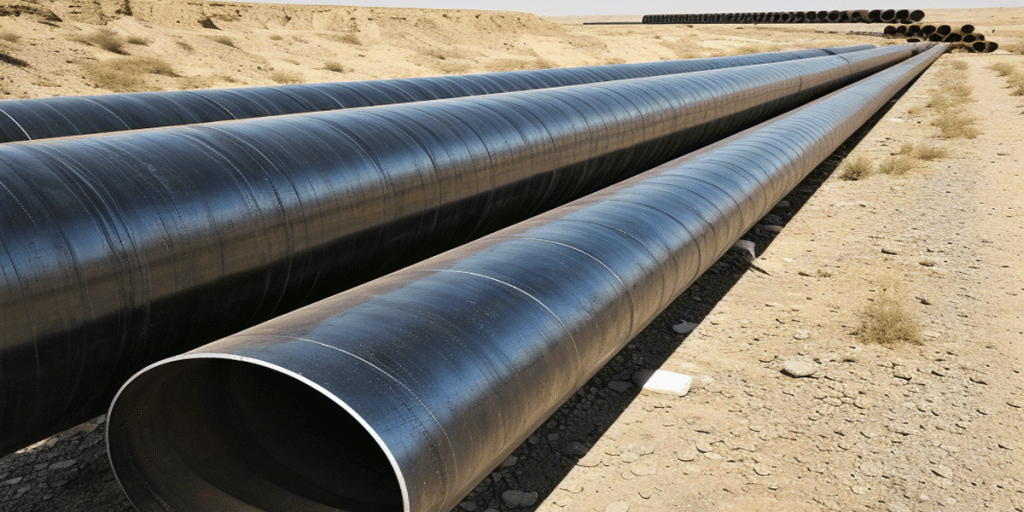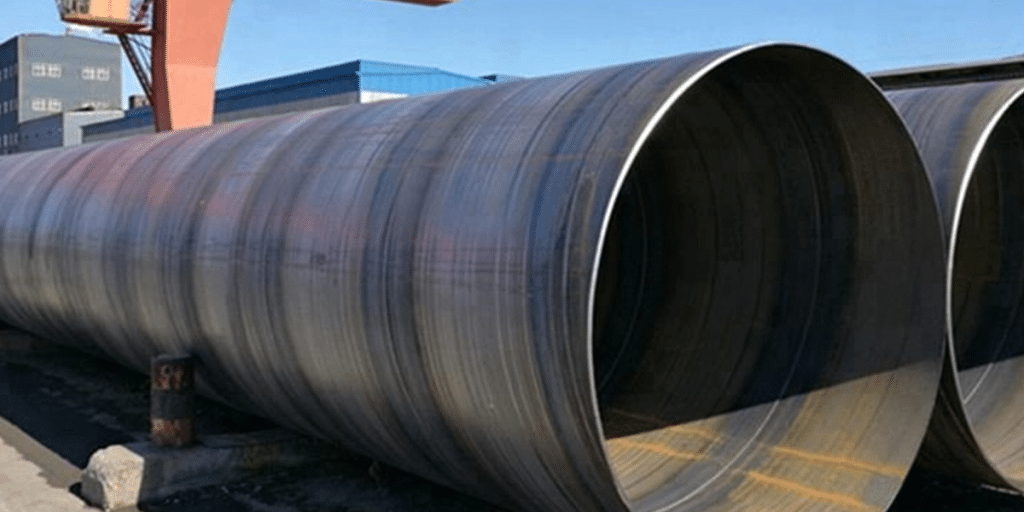- 1. Overview of ASTM A672 Standards and NDT Requirements
- 2. Detailed Explanation of Key NDT Methods
- 3. Ultrasonic Testing (UT) — The Precision Probe for Internal Defects
- 4. Radiographic Testing (RT) — The “X-ray Vision” for Welds
- 5. Magnetic Particle (MT) & Liquid Penetrant (PT) Testing — The Surface Defense Line
- 6. LONGMA’s In-House Laboratory Testing System
- 7. Why Customers Trust the LONGMA Brand
- 8. Conclusion: Testing Ensures Quality, Quality Builds Trust
In high-pressure water, steam, and oil transmission systems, ASTM A672 steel pipes are widely used due to their excellent weldability, mechanical strength, and consistent performance under pressure. For such critical applications, ensuring that each pipe is free from cracks, inclusions, or porosity is essential to system safety and reliability.
That’s why all ASTM A672 material must undergo rigorous Non-Destructive Testing (NDT) procedures before shipment to verify both weld and base metal integrity.
This article introduces the major NDT methods for ASTM A672 pipes, relevant standards, and how LONGMA ensures top-tier quality through its in-house laboratory testing system.
Overview of ASTM A672 Standards and NDT Requirements
The ASTM A672 specification—developed by ASTM International—covers Electric Fusion Welded (EFW) carbon steel pipes designed for moderate to high-temperature and pressure services.
Common grades include ASTM A672 C60, ASTM A672 C65 CL22, and ASTM A672 C70.
According to the standard, each pipe must be inspected through specific NDT methods to verify weld and base metal soundness. Below is a summary of the most common methods and their applicable standards:
| Test Type | ASTM Standard | Purpose | Application Area |
| Ultrasonic Testing (UT) | ASTM E213 | Detect internal defects in welds and base metal | Full weld length & base metal |
| Radiographic Testing (RT) | ASTM E94 / E142 | Detect porosity, cracks, and inclusions in welds | Weld seam |
| Magnetic Particle Testing (MT) | ASTM E709 | Detect surface and near-surface cracks | Weld area & heat-affected zone |
| Liquid Penetrant Testing (PT) | ASTM E165 | Detect surface discontinuities on non-magnetic materials | Outer surface |
| Hydrostatic Testing (HT) | ASTM A999 | Verify leak-tightness and pressure resistance | Entire pipe |
These processes ensure that each ASTM A672 pipe meets the highest safety and performance standards required for demanding environments.
Detailed Explanation of Key NDT Methods
Ultrasonic Testing (UT) — The Precision Probe for Internal Defects
Applicable Standard: ASTM E213
Ultrasonic Testing is one of the most frequently used inspection methods for ASTM A672 material. It employs high-frequency sound waves to detect internal flaws such as inclusions, lack of fusion, and porosity.
Procedure:
- Clean and polish the inspection area.
- Adjust probe angle and sensitivity.
- Move the probe slowly along the weld seam.
- Interpret waveform changes to identify flaw depth and type.
Advantages:
- Detects deep internal defects.
- Provides real-time inspection results.
- Ideal for thick-wall ASTM A672 C65 CL22pressure pipes.
Radiographic Testing (RT) — The “X-ray Vision” for Welds
Applicable Standards: ASTM E94 / ASTM E142
Radiographic Testing uses X-rays or gamma rays to penetrate the metal and capture images of internal discontinuities on film. It is highly effective in identifying weld porosity, inclusions, and cracks.
Process:
- Attach film to the back of the weld seam.
- Expose the area to a radiation source.
- Develop and interpret the film.
- Evaluate results per ASTM A672 specification.
Benefits:
- Provides permanent, traceable records.
- Excellent sensitivity to fine internal flaws.
- Commonly required for power and petrochemical project acceptance.
Magnetic Particle (MT) & Liquid Penetrant (PT) Testing — The Surface Defense Line
MT Standard: ASTM E709
PT Standard: ASTM E165
Magnetic Particle Testing is suitable for ferromagnetic ASTM A672 carbon steel materials to detect surface and near-surface cracks.
Liquid Penetrant Testing, on the other hand, is used for non-magnetic surfaces to reveal surface discontinuities.
| Aspect | Magnetic Particle (MT) | Liquid Penetrant (PT) |
| Principle | Uses magnetic field leakage to locate cracks | Uses capillary action and dye visibility |
| Applicable Materials | Ferromagnetic (e.g., A672 carbon steel) | Non-magnetic materials |
| Defect Types | Cracks, inclusions, lack of fusion | Surface cracks, pinholes |
| Sensitivity | High | Moderate |
| Application Areas | Weld seam, heat-affected zone | Pipe ends, outer surfaces |
Combining MT and PT ensures comprehensive surface and near-surface flaw detection across different materials and pipe sections.
LONGMA’s In-House Laboratory Testing System
LONGMA operates a fully equipped In-House Laboratory featuring ultrasonic flaw detectors, X-ray machines, magnetic particle testers, and hydrostatic test systems.
All ASTM A672 C65 CL22 and other grade pipes undergo strict quality control under the following process:
- Raw Material Chemical Analysis(ASTM E415)
- UT + RT Dual Weld Inspection
- Post-Heat Treatment Mechanical Testing(ASTM A370)
- Hydrostatic Pressure and Dimensional Verification
- Mill Test Certificate (MTC) Issuance for Each Pipe
This system guarantees every pipe’s weld integrity, dimensional precision, and mechanical properties meet or exceed ASTM standards.
Why Customers Trust the LONGMA Brand
Global buyers often worry about internal defects, inconsistent welding, or substandard materials. LONGMA eliminates these risks through its complete inspection system, traceable quality records, and third-party certifications.
LONGMA’s Core Advantages:
- Certified by ISO 9001, PED, and API 5L.
- 100% NDT traceable inspection reports.
- Over 20 years of manufacturing and export experience.
- Products exported to 30+ countries with a 98% satisfaction rate.
Conclusion: Testing Ensures Quality, Quality Builds Trust
NDT is more than a testing procedure—it is LONGMA’s commitment to safety and reliability.
Each qualified ASTM A672 pipe that leaves the factory represents precision, safety, and trust.
LONGMA — Your Reliable Supplier for ASTM A672 Steel Pipes.




